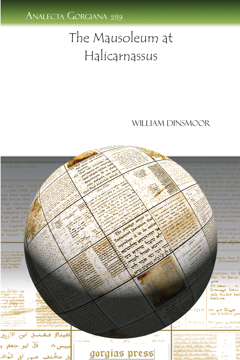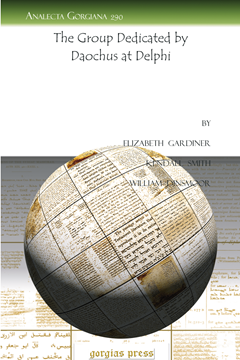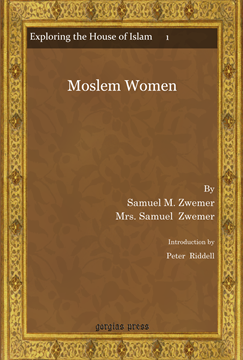The East Wall of the Erechtheum
Series: Analecta Gorgiana 284
ISBN: 978-1-60724-513-1
Gorham Phillips Stevens argues that the East wall had windows by which the inner cella was lit. This extra lighting suggests the use of the space as a sacred art gallery as well as a shrine.
$36.00 (USD) $21.60 (USD)
The Date of Damophon of Messene
By Ida Thallon
Series: Analecta Gorgiana 285
ISBN: 978-1-60724-514-8
Ida Thallon dates the work of Demophon, a famous sculptor whose surviving work is now agreed to be an example of innovative second-century BC Greek art.
$36.00 (USD) $21.60 (USD)
Antoniazzo Romano
Series: Analecta Gorgiana 286
ISBN: 978-1-60724-515-5
In this paper Everett reconstructs his professional life and activities of Antoniazzo Romano and suggests a list of works by the artist, a task made difficult by his stylistic resemblance to other painters of the time.
$37.00 (USD) $22.20 (USD)
The Technical History of White Lecythi
Series: Analecta Gorgiana 287
ISBN: 978-1-60724-516-2
This paper presents a careful chronology of white lechythoi and demonstrates the methods by which pottery dating was established before modern equipment allowed carbon dating of organic residue.
$36.00 (USD) $21.60 (USD)
Three Bronze Tripods Belonging to James Loeb, ESQ.
By George Chase
Series: Analecta Gorgiana 288
ISBN: 978-1-60724-517-9
Chase describes three tripods found in Etruscan tombs and discusses the extent to which they represent Etruscan adoption of Greek tripod-offering customs.
$41.00 (USD) $24.60 (USD)
The Mausoleum at Halicarnassus
Series: Analecta Gorgiana 289
ISBN: 978-1-60724-518-6
Dinsmoor suggests a reconstruction of the fragmented Mausoleum of Halicarnassus, one of the wonders of the ancient world and a model for several modern monuments.
$44.00 (USD) $26.40 (USD)
The Group Dedicated by Daochus at Delphi
Series: Analecta Gorgiana 290
ISBN: 978-1-60724-519-3
This paper shows the process by which the statue-group of Daochos in Delphi was reconstructed and discusses its position within the immediate area of its installation.
$37.00 (USD) $22.20 (USD)
Dated Sepulchral Vases from Alexandria
Series: Analecta Gorgiana 291
ISBN: 978-1-60724-520-9
This paper uses a group of inscribed pottery with datable references to fix a more certain chronology for such pottery in 3rd century BC Alexandria.
$37.00 (USD) $22.20 (USD)
Excavations on the Island of Mochlos, Crete, in 1908
Series: Analecta Gorgiana 292
ISBN: 978-1-60724-521-6
The original site report detailing the discovery and first excavations at the Minoan settlement on Mochlos, Crete.
$37.00 (USD) $22.20 (USD)
Moslem Women
Series: Exploring the House of Islam: Perceptions of Islam in the Period of Western Ascendancy 1800-1945 1
ISBN: 978-1-60724-409-7
Moslem Women is built around six main chapters; half are devoted to the place and experiences of Moslem women, and half consider the Christian mission to these women. The Zwemers acknowledge some of the great women of Islamic history, such as Rabia, the famous early mystic, and Nurah Mahal, wife of the Mughal Emperor Jahangir. They speak in glowing terms about advances in the women’s situation in post-Ottoman Turkey. Their work is dedicated to serving Muslims and to seeing them as people rather than as faceless numbers; it is an excellent model for today’s Christians who feel called to engagement with Islam.
$189.00 (USD) $113.40 (USD)









